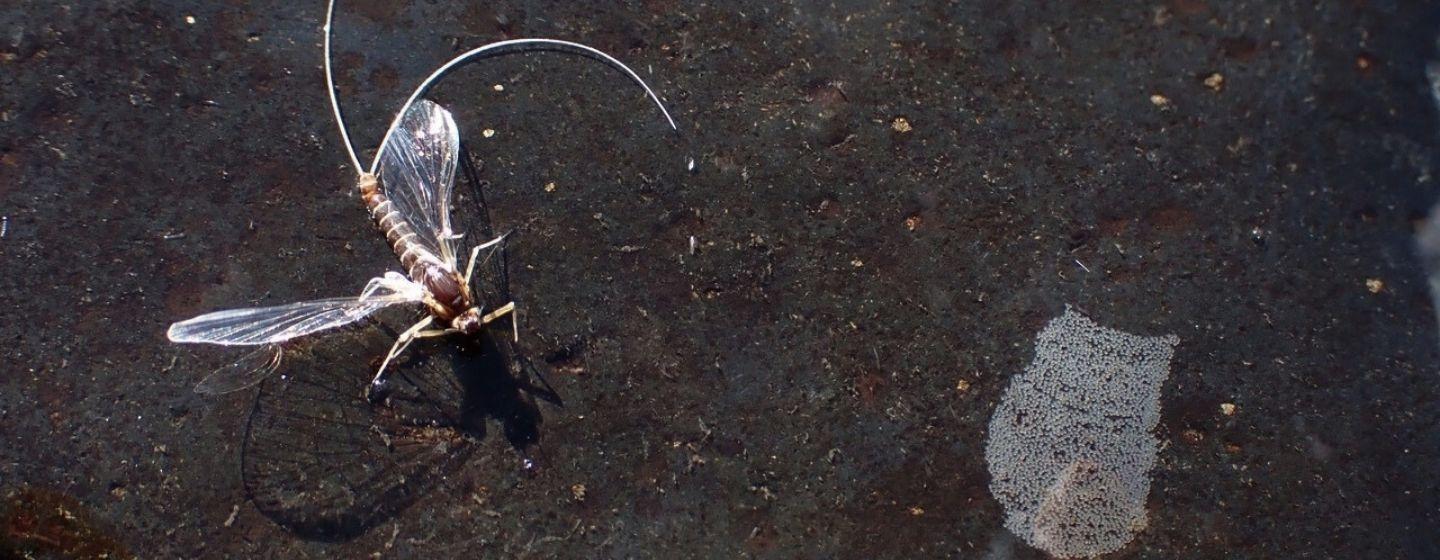Aquatic Insects Need Rock (But No Roll!)


A recent study by researchers at NC State finds that adding more protruding rocks to restored streams can help attract female aquatic insects that lay their eggs on the bottoms or sides of rocks. And that increases the chances that a restored stream will become a thriving stream in the future.
“More eggs that hatch into larval insects is great news for stream restoration because the re-establishment of organisms, such as insects, is often slower than expected in restored streams,” said Brad Taylor, associate professor of applied ecology at NC State. “A thriving population of stream insects generally portends good water quality and overall stream health and provides food for fish, amphibians, reptiles and even birds.”
Most insects that live in and near streams use rocks that protrude above the water to land on. They then crawl underwater and attach their eggs to the underside of the rocks.
However, many streams that have been degraded—for reasons including pollution, land use and severe erosion—and restored do not regain their original abundance of aquatic insects even decades later. NC State researchers wanted to test whether increasing the egg-laying habitat by adding more rock landing areas would increase the numbers and diversity of insect eggs and larvae.
Think of it as adding more runways to a busy airport.
Researchers selected 10 restored streams in northwestern North Carolina and added protruding rocks gathered near the streams to five of them. The remaining streams were untouched.
The team found that the streams with additional protruding rocks had almost twice as many egg masses compared to the untreated streams. In fact, after adding the rocks, the egg numbers in the treated streams were like those in undisturbed streams found downstream of state parks and national forests.
Researchers also found that some rocks were more attractive to females and received most of the eggs. Some of the added rocks, however, had no eggs at all.
“This study was a successful proof of concept: adding rocks to restored streams enhances the abundance and diversity of stream insect eggs,” adds Taylor. “The insects are really putting all their eggs in one basket, so to speak, or onto a few rocks. Our future goal is to figure out how and why females select specific rocks so that any rocks added to streams get used because moving large rocks around a stream is hard work.”
In the second year of the study, the weather was wetter than usual, causing many of the rocks to roll. Researchers hope to share their findings with stream restoration companies so they can add rocks that are more attractive and stable enough so they won’t roll and potentially destroy eggs.
“This will make restoration efforts more cost-efficient and effective,” said Taylor. “There are miles of restored streams, so there are lots of rocks needed. We want to make sure every rock gets eggs.”
To learn more about stream restoration, watch this Sci NC story on how efforts to straighten our waterways has disrupted habitats and polluted our water.
A 10-year project poses a question: Can we fix broken rivers by adding some curves?